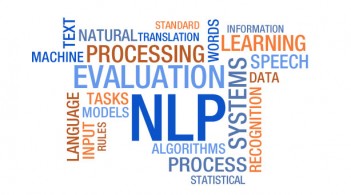Blog Articles
Wednesday, February 17th, 2016
In the realm of biomedical informatics there are few things as important as an understanding of natural language processing (NLP). After all, data is meaningless without analysis and context. We need to be able to interpret the information for it to be useful.
 So what, exactly, is natural language processing, and how does it impact the field of health informatics?
So what, exactly, is natural language processing, and how does it impact the field of health informatics?
What is Natural Language Processing?
We interact with technology every single day of our lives, but humans and computers communicate in fundamentally different ways. Whereas we tell stories, take notes, and relay information through a narrative, computers rely on objective data and commands.
Bridging this gap is the root of natural language processing.
Actionable data points, derived from narrative
Natural language processing technology is designed to derive meaningful and actionable data from freely written text. This is particularly useful because it allows medical professionals to record information in a natural manner. When executed well, natural language processing enables a more natural transition between doctor and database.1
Consider all of the data that is taken in when a single patient is seen. This data is often entered into an Electronic Health Record (EHR) database. Generally, these databases require the entry of information through preconstructed templates. While EHR databases have made great strides in becoming comprehensive sources of patient information, these templates can sometimes be clunky and unintuitive.
Through free form text, health care professionals are able to record notes in a more natural manner. The NLP technology then translates the information into a common language understood not only by the computer, but by physicians, nurses, patients and their families.
This not only saves the health care professional time and energy; it ensures that relevant data is pulled and translated in a universal manner.
Moving HealthIT Forward
In addition to ensuring that everyone involved in the process is communicating effectively, NLP technology can be used to drive and provide results from clinical decision support systems (CDSS). Health care providers’ expertise and experience are among their most valuable resources, but CDSS is a tool that can help guide physicians in making data-driven clinical decisions.2
By incorporating a conversational and intuitive user experience, health IT professionals can communicate findings from the vast sea of health data created through NLP and other data collection methods in order to improve health care.
A natural bridge between humans and computers
NLP technology continues to be refined, providing countless benefits. Through effective natural language processing, health care professionals are doing more than saving time--they are communicating more effectively, identifying crucial data, and pushing the boundaries of health care forward.
Resources: